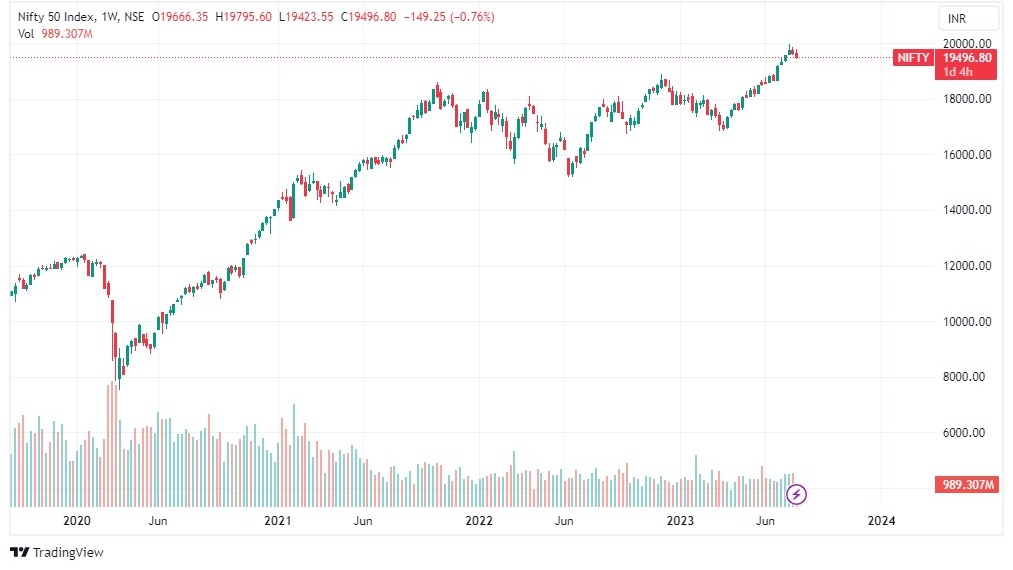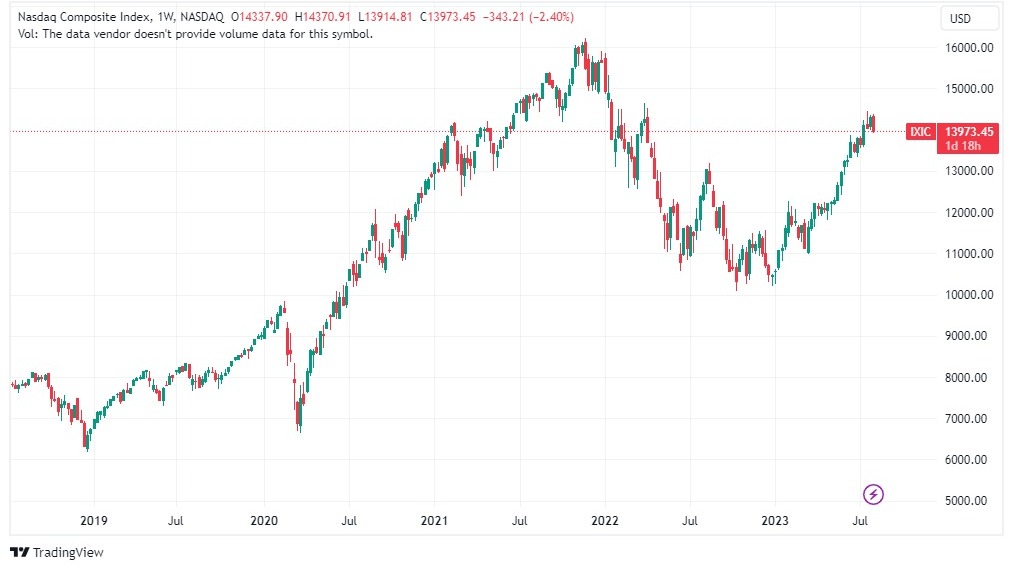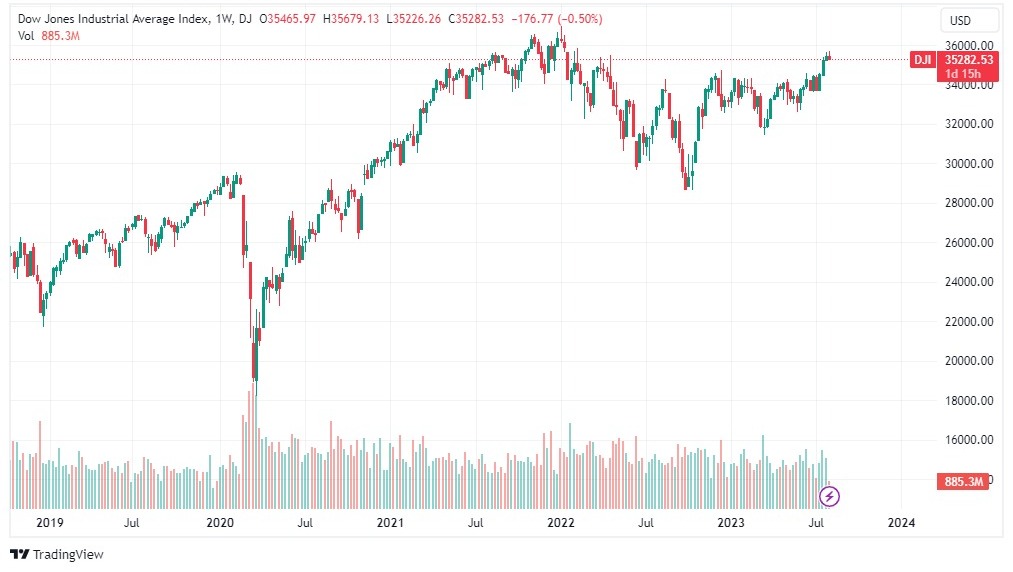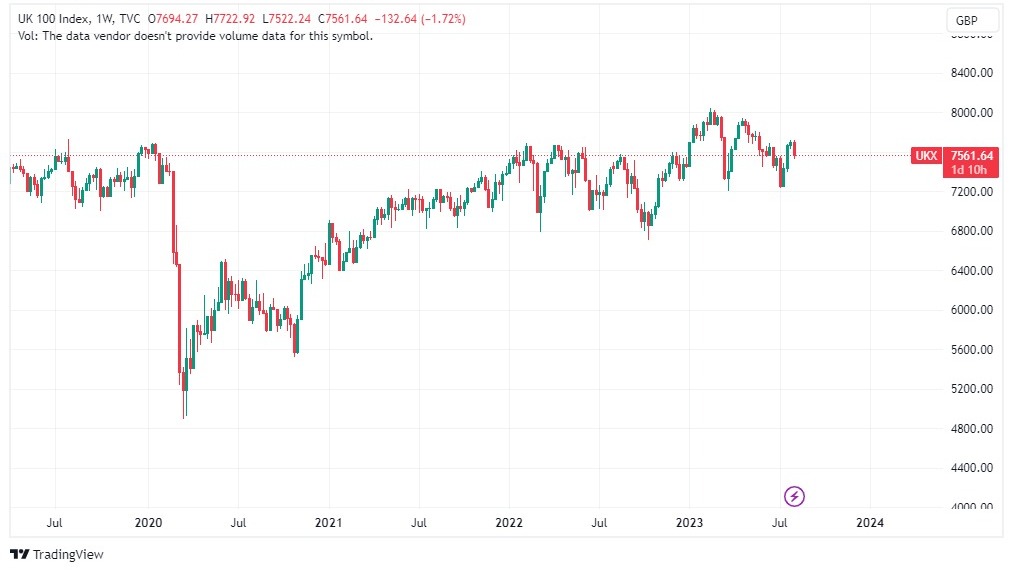Resilience and Fortitude: How India Navigated Covid, Rice Ban, and Soaring Crude Oil Prices to Outshine Global Markets

Over the past three years since the Covid pandemic, India's stock market has demonstrated exceptional performance compared to global markets. Prior to the pandemic, major indices, including India's Nifty 50, were near or at their all-time highs. However, the unexpected outbreak of Covid caused a drastic crash in these indices. For instance, Nifty reached its 52-week high of 12,450 in January 2020 but plummeted to a low of 7,830 in March 2020, marking a significant 40% decline. Previously this low was touched in May 2016. In November 2020, we witnessed a recovery till 12,830, which became the new all-time high. Following this, a recovery ensued, leading to a new all-time high of 18,600 in October 2021, a remarkable 240% rise from the pandemic low. Subsequently, a 20% market downturn occurred during the second Covid wave in June 2022, pushing the index down to 15,200. Despite this rollercoaster ride, the market is now approaching the illustrious 20,000 mark, with Nifty currently trading around 19,500 as of 2nd August 2023. Considering India's current economic condition, the market is expected to remain bullish in the upcoming months. However, Nifty's ability to surpass the 20,000 mark will provide further clarity on the potential for a new all-time high.
For a daily comprehensive technical outlook, refer to Enrich Money's Nifty 50 report.

Looking back at the performance of global stock markets, particularly the NASDAQ, DOW JONES, and FTSE indices, we observe significant fluctuations.
NASDAQ

Before the pandemic, in February 2020, NASDAQ reached an all-time high of approximately 9740. However, as the pandemic hit, it experienced a sharp 30% decline, dropping to 6770 in March 2020, though it managed to avoid reaching the lows seen in June 2019. The market showed resilience and recovered to 9850 in June 2020. Subsequently, it surged further and reached a remarkable all-time high of 16770 in November 2021, indicating an impressive 240% rise from its pandemic level. Despite this, there were subsequent corrections, and in October, NASDAQ plunged to 10440. As of August 2, 2023, NASDAQ is trading around 14200, showcasing its positive journey from the pandemic levels. Given this optimistic trajectory, there is a hopeful expectation for bullish trends in the coming months.
DOW JONES

The Dow Jones index experienced significant fluctuations in the past few years. In February 2020, it reached an all-time high of around 29410, but quickly plummeted by 38% to 18210 in March 2020, due to the COVID-19 pandemic's impact on global markets. However, displaying resilience during the pandemic recovery, Dow Jones surged back up to touch its previous peak, hitting 29940 in November 2020. The rally continued, and in January 2022, the index soared by an impressive 200%, reaching a remarkable 36950. However, this meteoric rise was followed by a downturn, witnessing a 23% decline in September 2022, settling at 28715. As of August 2, 2023, the Dow Jones is currently trading around 35400, indicating its potential for further upward movement. Similar to the Nasdaq and Nifty indices, the Dow Jones shows promising prospects for future growth.
FTSE 100

The performance of the FTSE Index during the pandemic period has been observed to lag behind other major global indices. In January 2020, the Index was trading at approximately 7680, not reaching its all-time high. However, it experienced a significant decline to 4900, witnessing a sharp 37% drop in March 2020. Subsequently, as part of the COVID-19 recovery efforts, the index attempted to bounce back and only by January 2023, did it manage to reach its pre-pandemic level of 7850. Despite striving to compete with other indices, historical data clearly indicates its struggle to catch up. By February 2023, FTSE touched 8053, representing a 160% rise from the COVID-19 levels. However, this performance remains considerably lower compared to other indices. As of August 2, 2023, the index is trading around the 7500 range.
The data provided clearly indicates that the FTSE index is experiencing a slower recovery compared to other prominent global indices. Unlike its counterparts, the FTSE index is taking a considerable amount of time to return to its initial levels and appears to be consolidating over the years. Consequently, investors in the stock market can expect minimal portfolio growth. The index has been struggling to establish new all-time highs even before the impact of food inflation in the UK exacerbated the situation. Since December 2021, the UK has faced challenges with soaring interest rates and consumer inflation, resulting in significant hardships for many businesses. The FTSE index's heavy exposure to banking and the adverse effects on oil demand due to the lingering impact of the COVID-19 pandemic are some of the additional factors contributing to its lag behind other major indices worldwide.
INDIA’S MARKET RESILIENCE AMIDST GLOBAL TURBULENCE
Indian indices have captured significant attention due to their recent exceptional growth, and this rally can be attributed to various factors. Investors find Indian markets more appealing due to the country's robust economic fundamentals amidst a weak global growth outlook. Additionally, the rise in corporate profitability and a moderation in price-to-earning multiples have further contributed to this attractiveness for Foreign Portfolio Investors (FPIs).In response to the global food inflation concerns, India has implemented a policy to impose restrictions on rice exports as a precautionary measure.
India is a significant player in the global rice export market, commanding over 40% of the total exports. In 2022, the country reached a record level of rice exports, totaling 22.2 million tonnes, reaching more than 140 countries worldwide. However, in response to a delayed start of seasonal monsoon rains that negatively impacted the crop and raised concerns about potential production shortages, India swiftly imposed a ban on the export of non-basmati white rice. Additionally, a 20% duty was levied on exports of various grades of rice in September 2022.
In the future, India aims to avoid food inflation, and one strategy is to discontinue rice exports. The decision is also influenced by the reduction in agricultural land and the increasing population, with India now being the world's most populous country.In response to inflationary pressures, the RBI typically raises the repo rate to counteract them. Despite the global rise in crude oil prices, the impact on petrol prices in India has not been directly evident. One possible explanation for this could be that the government is generating adequate income through GST and other taxes, reducing the reliance on revenue from petrol sales. Another perspective suggests that this situation could be akin to a "calmness before the storm," possibility that it might be influenced by the upcoming election.In conclusion, India is expected to exhibit remarkable growth in terms of GDP, inflation, and other major economic indicators, with a direct impact on the stock market. Given this positive outlook, individuals can make informed decisions about participating in this growth journey. However, investing in the market necessitates careful analysis, and staying updated with the latest news and articles is crucial.
